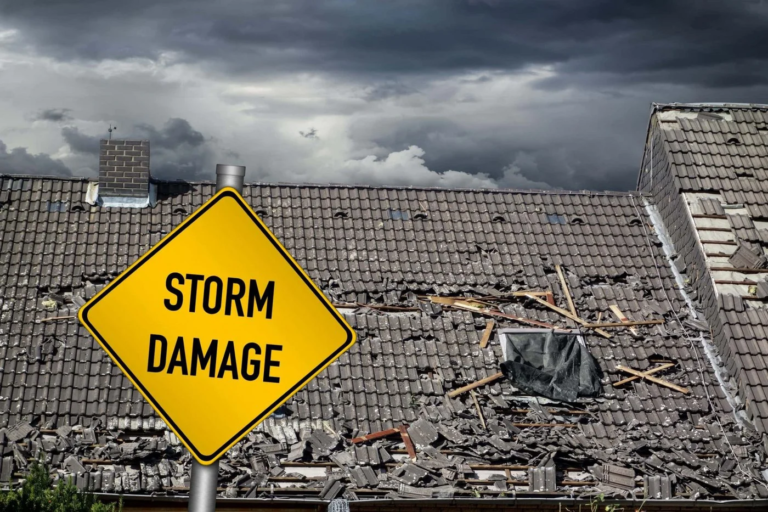Storm and Hurricane Damage Insurance Coverage Laws

Storm and Hurricane Damage Insurance Coverage Laws
Storms and hurricanes can cause catastrophic damage to homes and businesses, leaving property owners grappling with costly repairs. Insurance policies often provide coverage for storm and hurricane damage, but understanding the legal aspects of coverage, exclusions, and claim processes can be complex. The laws governing storm and hurricane damage claims vary by state, with significant differences depending on the region and the type of storm or damage incurred.
Types of Storm/Hurricane Damage Covered by Insurance
Homeowners’ insurance policies typically cover a range of damages caused by storms and hurricanes, but the specifics depend on the policy and the state where the property is located. Standard coverage often includes:
- Wind Damage: High winds from hurricanes and storms can cause extensive damage to roofs, windows, and structures. Wind damage is commonly covered in most insurance policies, but certain areas prone to hurricanes may require separate windstorm coverage.
- Hail Damage: Many policies include hail damage, which can dent roofs, break windows, and damage vehicles.
- Water Damage (from rain): If a storm damages the roof or walls, allowing rainwater to enter, insurance usually covers the resulting water damage. However, this is distinct from flood damage.
- Debris Removal: The cost to remove fallen trees, branches, and other debris caused by storms is often included in coverage.
Flooding and Storm Surge Coverage
Flooding and storm surges are major concerns during hurricanes, but most standard homeowners’ insurance policies do not cover flood damage. For this type of protection, property owners must purchase separate flood insurance, typically through the National Flood Insurance Program (NFIP) or a private insurer. Flood insurance covers damage caused by storm surges, rising water, and overflowing rivers, which are common after hurricanes.
State Laws and Coverage Requirements
In the U.S., insurance regulations and requirements are managed at the state level, leading to some variations in how storm and hurricane damage coverage is handled. Here are a few examples:
- Hurricane Deductibles: States along the Gulf Coast and the Atlantic seaboard, such as Florida, Louisiana, Texas, and North Carolina, often have hurricane deductibles separate from standard homeowners’ insurance deductibles. These deductibles are usually based on a percentage of the home’s insured value (e.g., 2% to 5%) and are triggered when the National Weather Service officially declares a hurricane.
- Windstorm Exclusions: In some high-risk states, like Florida and Texas, insurers may exclude windstorm coverage from standard policies, requiring homeowners to purchase separate windstorm insurance from a private insurer or a state-run entity, such as the Texas Windstorm Insurance Association (TWIA) or Citizens Property Insurance Corporation in Florida.
- Anti-Concurrent Causation Clauses: Many insurance policies contain anti-concurrent causation (ACC) clauses, which can limit coverage if damage results from both covered (e.g., wind) and non-covered (e.g., flooding) events occurring concurrently. For example, if a hurricane causes both wind and flood damage, an ACC clause may allow the insurer to deny coverage for the entire claim if flood damage was a contributing factor, even if wind damage is typically covered.
Filing a Storm or Hurricane Damage Claim
Property owners affected by storm or hurricane damage must follow specific steps when filing an insurance claim:
- Immediate Notification: Most insurance policies require the policyholder to notify the insurer as soon as possible after the damage occurs. Failure to do so can result in claim denial.
- Document the Damage: Policyholders should take photos and videos of the damage, keep records of any repairs or temporary fixes, and maintain receipts for expenses incurred due to the storm. This documentation is crucial for maximizing the claim.
- Mitigate Further Damage: Policyholders are usually required to take reasonable steps to prevent further damage, such as placing tarps on broken windows or covering roof holes. Failure to mitigate damage can lead to reduced compensation.
- Understand Policy Exclusions: Before filing a claim, homeowners should carefully review their insurance policy to understand exclusions, such as whether flood damage or storm surge is covered. Understanding the fine print can prevent misunderstandings and denials.
Disputes and Legal Protections
Disputes between policyholders and insurers often arise when there is disagreement about what constitutes covered damage, how much should be paid out, or whether exclusions like the ACC clause apply. Homeowners who face difficulties with their claims have several legal protections and options:
- Bad Faith Insurance Laws: Insurance companies are required to act in good faith when handling claims. If an insurer unfairly denies a claim, delays processing, or offers inadequate compensation, the policyholder may have grounds to sue for bad faith. State laws govern these actions, and penalties for bad faith claims can include compensatory and punitive damages.
- Public Adjusters: A public adjuster is a licensed professional hired by the policyholder to assess the damage and negotiate the claim with the insurance company. Public adjusters help ensure a fair settlement by advocating for the homeowner’s interests, particularly when there is a disagreement about the extent of the damage or the amount of compensation owed.
- Appealing a Denied Claim: If a claim is denied, homeowners have the right to appeal the decision. This process typically involves providing additional evidence, getting second opinions, or hiring legal counsel to help negotiate with the insurer.
- State-Specific Consumer Protections: Some states provide additional consumer protections to homeowners in the event of storm damage. For example, Florida has a Homeowners’ Bill of Rights, which requires insurers to promptly acknowledge and investigate storm damage claims, and states such as Texas have established windstorm insurance programs to help homeowners in hurricane-prone areas get the coverage they need.
Preparing for Future Storms
Due to the increasing severity of hurricanes and storms in recent years, it is essential for homeowners to review their policies and ensure they have adequate coverage, including flood and windstorm insurance. Some tips for preparing include:
- Review Policy Annually: Make sure your homeowners’ insurance policy is up-to-date and that you have appropriate hurricane and flood coverage.
- Increase Deductibles if Necessary: In high-risk areas, you may be subject to hurricane deductibles. Understand how these deductibles apply and adjust your financial planning accordingly.
- Document Property Condition: Take regular photos and videos of your home and property to have pre-damage documentation, which can help in case of future claims.
Conclusion
Navigating storm and hurricane damage claims can be challenging, especially with varying state laws, policy exclusions, and insurance requirements. Homeowners should be proactive in understanding their insurance coverage, especially regarding wind and flood damage. By being aware of policy details, state regulations, and legal protections, property owners can ensure they are better prepared for any future storms and hurricanes. If disputes arise, consulting with legal professionals or public adjusters can help resolve issues and secure fair compensation.


